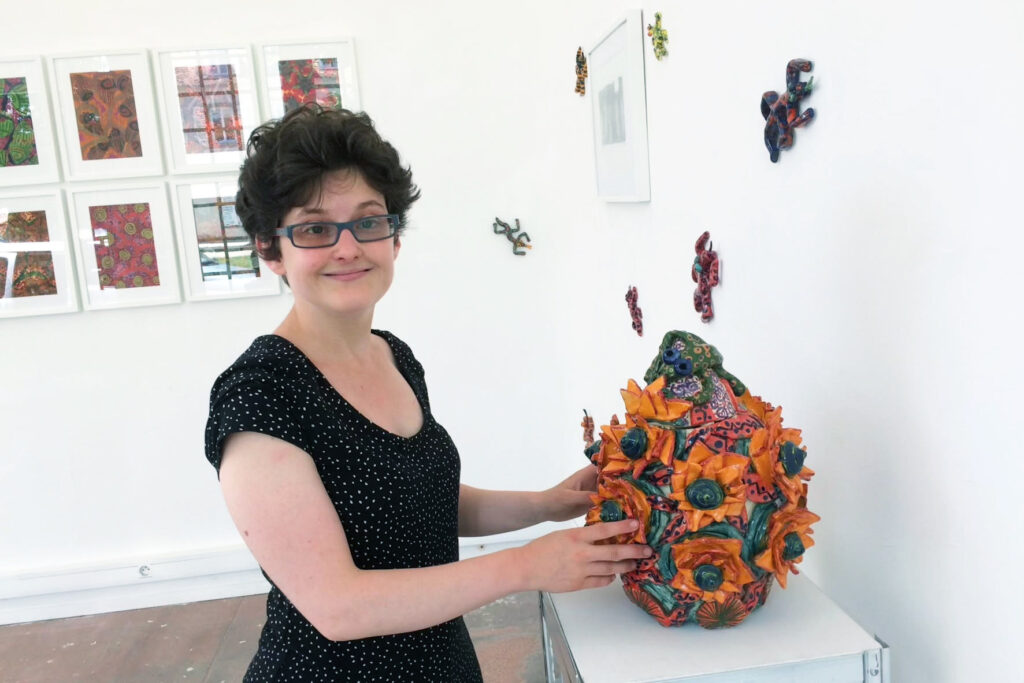
The world’s first art museum to be built by women, MSeum recognizes that women experience blindness 40 percent more than men, and will do its utmost to offer the most enriching educational experience for blind and low-vision visitors of all genders, with tactile artworks celebrating the sense of touch, inviting everyone to “see” with their hands. MSeum has a soft spot for women artists with the initials MS, and hereby officially adopts Morgane Salmon of Strasbourg (b. June 2, 1987) as a founding daughter and muse, the very embodiment of our mission, “Know Unknowns.”
A young artist on the path to becoming known, Salmon arrives to remind us of an important truth: If life is a long lesson in facing difficult challenges with courage, art can be the greatest teacher. Working in clay, this young avatar of the Pattern and Decoration movement creates dazzlingly colorful ceramic sculptures that bring to life a fantastical world of flora and fauna.
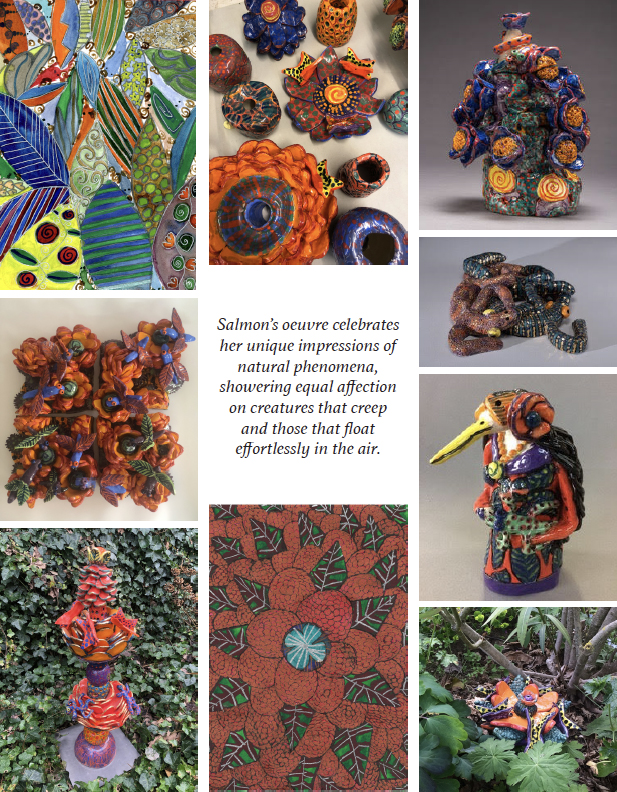
There is an urgency to this intensely vivid, brave, and deeply felt work that makes sense when one learns that Salmon, 36, faces the challenge that terrifies every visual artist: vision loss. Recently diagnosed with retinitis pigmentosa, she has come to accept that what she loves most —the spectrum of glorious color— will soon fade from her view, like the ethereal watercolors she also enjoys painting, to be followed by gradual, then total blindness. Eventually, she will experience her old friends, her artworks, only through touch.
How Salmon and her family cope with this devastating prognosis is an inspiring lesson for us all. It’s not every young artist who has the good fortune to be born to parents who not only encourage and appreciate her creative practice, but are artistic themselves. American-born Maguy Pfenninger enjoyed a long career in museum education at the Museums of Strasbourg; her husband Maurice Salmon [reliure-art.com] is a bookbinder artist. Morgane, their daughter and only child, inherited a double dose of culture, displaying artistic talent as early as age 10. She also struggled with developmental challenges that only recently got a proper name: neurodivergence.
“When we discovered that Morgane had cognitive difficulties,” Pfenninger says, “the doctor looked at her, then looked at me, and said, ‘If she’s into art, just let her go’.” The young artist has been “going” ever since, producing an impressive body of work that proves the truth of her statement, “I love nature.” Salmon’s oeuvre celebrates her unique impressions of natural phenomena, showering equal affection on creatures that creep (lizards, snakes) and those that float effortlessly in the air (hummingbirds and butterflies), symbols, she says, of “la liberté” (freedom). She enjoys making art, and sharing it: “I like to show people my creations.”
And people enjoy taking them in, both visually and through the sense of touch. “Having seen Morgane’s dedication to her artwork since she was a small child, I’ve been so proud to watch it grow,” says family friend Linda Vogel, jewelry designer and artist, who first met Pfenninger in 1973. It is humbling to see the bravery of a young artist as she gathers roses while she may, drawing (and painting, and sculpting) every last ounce of sustenance from her lifelong art practice. Asked about the prospect of losing her sight — “cette maladie,” as she calls it —Salmon allows that it does disturb her. How will she cope? She smiles and concludes, with wonderful wit, sly and defiant to make any Surrealist proud: “On verra” (“We will see”). Behold the empowering Rx of Art. G&S
Instagram: @morganesalmonheurgothique and heurgothique.fr

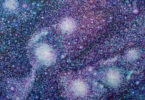
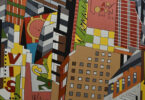
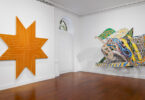
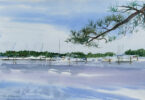
Leave a Comment